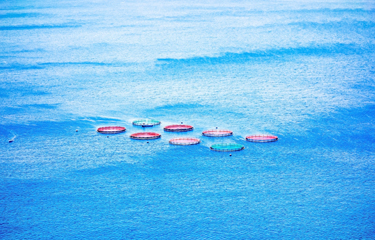A report published in the January 2023 issue of Marine Policy says there is “strong potential” for offshore aquaculture developments in U.S. waters. However, there are “knowledge gaps” that need to be filled to develop the right regulatory framework that will guide the emerging industry.
The report, "Toward an environmentally responsible offshore aquaculture industry in the United States: Ecological risks, remedies, and knowledge gaps," said the industry must answer critical questions about offshore aquaculture. Those include identifying methods of eliminating escapes, choosing sites that maximize production and environmental performance; and address risks from climate change.
In some cases, the report said established best practices for nearshore developments could be used to mitigate risks, but in others, those may not suffice.
"Because offshore aquaculture poses some unique ecological risks, new mitigation methods will be required,” the report said. “Avoiding wildlife interactions continues to be problematic, given difficulties in characterizing the distribution and abundance of wildlife populations, particularly in the context of climate-induced changes and the lack of proven engineering solutions should harmful interactions occur. Advances in ocean engineering will be required to reduce the risk of infrastructure loss and damage and to reduce the environmental footprint of materials and transport.”
Still, the lead author of the report, EDF Senior Scientist Rod Fujita, said such developments can boost domestic production and provide jobs to communities.
“U.S. aquaculture facilities operating within a strong and well enforced regulatory system could potentially produce seafood with relatively fewer environmental impacts compared to seafood grown and harvested in contexts with weaker regulation or in areas that are farther from major markets,” he wrote in the report.
Besides the EDF, other organizations and institutions represented in the report include the Stanford University School of Earth, Energy and Environmental Studies, Shanghai Jiao Tong University School of Oceanography the University of California, Santa Barbara, the New England Aquarium, the Monterey Bay Aquarium, and Cargill Aqua Nutrition.
Overall, the report's authors said its findings can be used as a roadmap for identifying the path future research needs to take to make offshore aquaculture successful, while minimizing its environmental impacts.
“Offshore aquaculture in the U.S. presents an exciting opportunity for more homegrown seafood but, like any ocean use, it must balance industry development with the conservation of marine ecosystems and wildlife,” New England Aquarium Anderson Cabot Center for Ocean Life Aquaculture Program Manager Matthew Thompson, a co-author of the report, said. “To achieve this balance, several outstanding challenges require innovative solutions, which we hope this work will inspire.”
Photo courtesy of aldorado/Shutterstock







